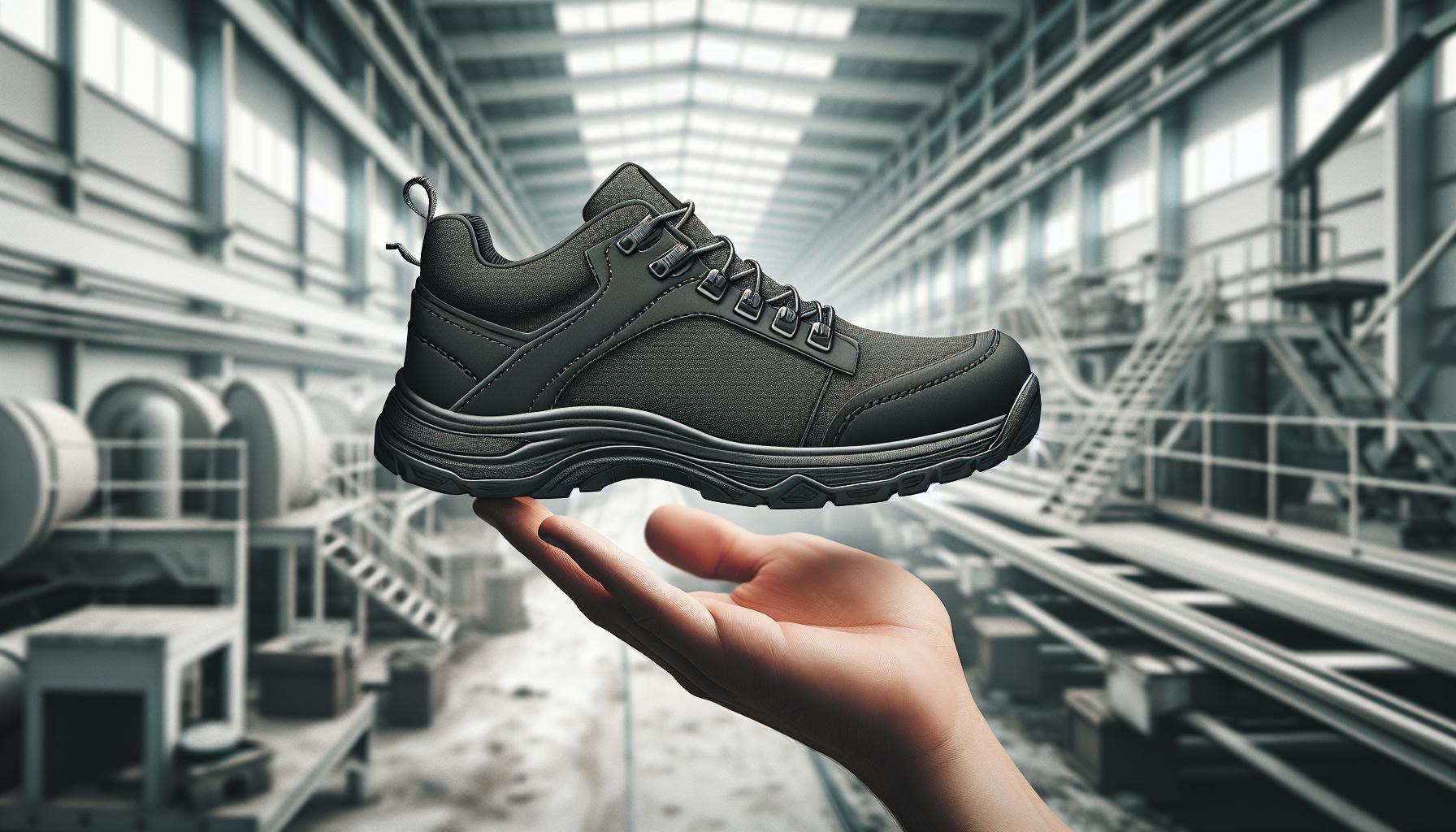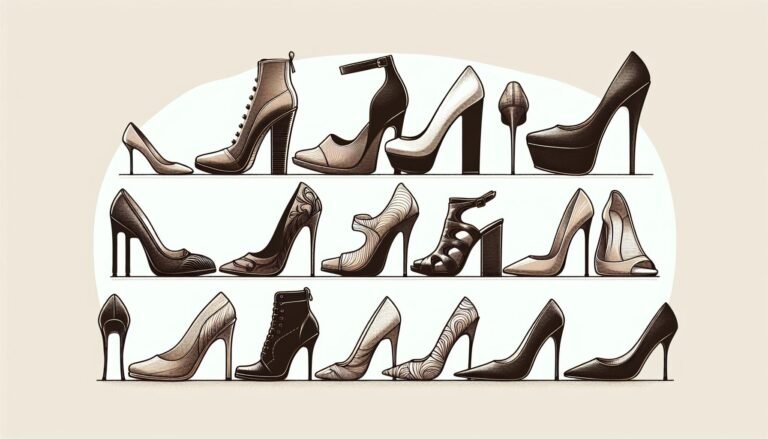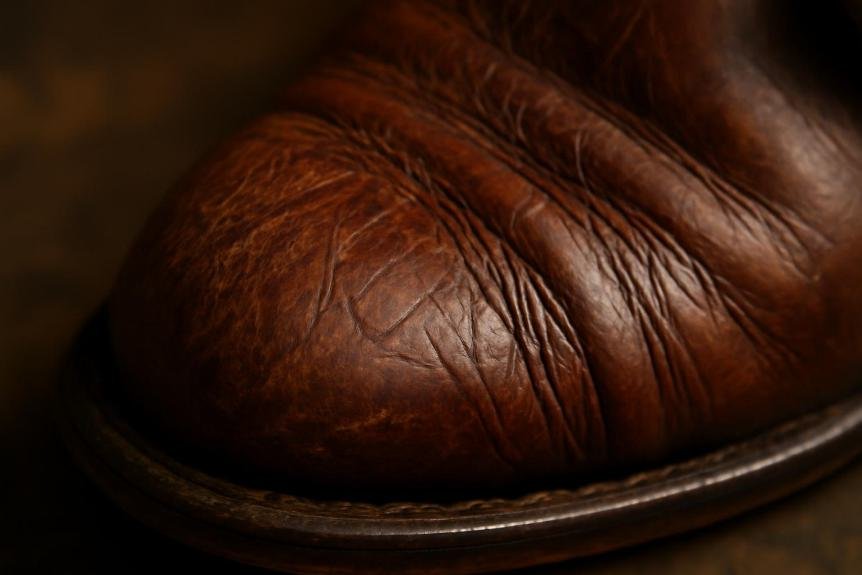What is a Composite Toe Shoe? – The Ultimate Safety Footwear Guide
When it comes to protecting your toes on the job, there’s more than one way to keep them safe. I’ve explored various options, but composite toe shoes have caught my attention for their unique blend of safety and comfort. Unlike their steel-toed counterparts, these shoes offer a lightweight alternative without compromising on protection.
So, what exactly is a composite toe shoe? It’s a type of safety footwear designed with a non-metallic toe cap, typically made from materials like plastic, carbon fiber, or Kevlar. These shoes are perfect for environments where metal-free footwear is required, offering an ingenious solution to toe protection that meets or exceeds industry safety standards. Let’s dive deeper into why composite toe shoes might just be the next big thing in your workwear arsenal.
Key Takeaways
- Composite toe shoes utilize non-metallic toe caps, typically made from plastic, carbon fiber, or Kevlar, offering a lightweight and metal-free alternative for protective footwear that meets or exceeds ASTM F2413-18 safety standards.
- They are designed to provide superior comfort and ease for extended wear, making them ideal for workers in various industries who spend long hours on their feet.
- Unlike steel-toed footwear, composite toe shoes do not conduct electricity, making them a safer choice for electricians and workers in environments with electrical hazards.
- The materials used in composite toe caps, such as plastic, carbon fiber, and Kevlar, are selected for their durability, strength, and light weight, ensuring long-term protection and reducing the need for frequent replacements.
- These shoes offer versatility in style and functionality, suitable for various workplaces, including construction sites, manufacturing environments, and areas with metal detectors, thereby catering to a broad audience.
- Industries such as construction, engineering, manufacturing, transportation, warehousing, and emergency services prefer composite toe shoes for their blend of safety, comfort, lightweight, and non-conductive properties.
Understanding Composite Toe Shoes

When I first heard about composite toe shoes, I admit, I was curious. What sets them apart in the world of protective footwear? As I dug deeper, I realized that these shoes are a game changer for many professionals. Unlike traditional steel-toed footwear, composite toe shoes utilize materials like plastic, carbon fiber, and Kevlar. These innovative materials not only make the shoes lighter but also ensure they don’t conduct electricity. This is a crucial feature for electricians and anyone working in environments where electrical hazards are a concern.
One of the standout benefits of composite toe shoes is their comfort. Weighing significantly less than their steel-toed counterparts, they provide ease and flexibility for long hours of wear. This is especially beneficial for workers who are on their feet all day. Moreover, for those who work in metal-free zones, composite toe shoes meet the requirement while still offering ample protection.
To understand the level of safety composite toe shoes provide, it’s important to look at the standards they meet. In the US, the American Society for Testing and Materials (ASTM) sets the guidelines for protective footwear. Shoes that meet or exceed ASTM standards are considered safe for various hazardous work environments. Here’s a quick look at the data:
| Standard | Description |
|---|---|
| ASTM F2413-18 | Standard Specification for Performance Requirements for Protective (Safety) Toe Cap Footwear |
It’s clear that composite toe shoes are designed with both safety and comfort in mind. They’re crafted to shield the toes from impact and compression hazards, making them a preferred choice for many industries. Whether it’s construction, manufacturing, or utility work, these shoes are built to support workers without the added weight and discomfort of steel toes.
Materials Used in Composite Toe Caps

When I first dove into the world of composite toe shoes, I was curious about what makes them tick—specifically, what materials are behind these innovative toe caps. It turns out, the answer is as fascinating as it is varied.
Composite toe caps are crafted from a range of Non-Metallic Materials. These include plastic, carbon fiber, and Kevlar, each offering its own set of benefits. Let’s break down the key characteristics that make these materials standout choices for protective footwear:
- Plastic: Often used for its affordability and lightweight nature, plastic composite toe caps are a go-to for many manufacturers looking to balance protection with comfort. While not as strong as some other materials, plastic offers a solid level of resistance against impacts and compressions.
- Carbon Fiber: This material is where high strength meets low weight, making it an excellent choice for those needing serious protection without the added bulk. Carbon fiber composite toe caps are known for their durability and resistance to temperature changes, making them suitable for a variety of working environments.
- Kevlar: Renowned for its use in bulletproof vests, Kevlar brings its extraordinary tensile strength to the world of footwear. Kevlar composite toe caps offer unparalleled protection and are exceptionally lightweight. Additionally, Kevlar is non-conductive, making it an ideal choice for electric hazard resistance.
These materials not only redefine what protective footwear can be but also underscore the importance of safety without compromise. As someone always on the lookout for top-tier safety gear, I’m impressed by the innovation and thoughtfulness that goes into selecting materials for composite toe caps. The blend of safety, comfort, and durability these materials offer keeps them at the forefront of protective footwear technology.
Benefits of Composite Toe Shoes

When exploring the world of work boots and safety footwear, I’ve noticed a significant lean toward composite toe shoes. Their benefits are vast, offering considerably more than just protection from heavy falling objects or compression incidents. Here’s why I’m drawn to them and why you might find them appealing too.
Safety and Protection are at the forefront of composite toe shoes’ advantages. Unlike traditional steel toe boots, composite materials like plastic, carbon fiber, and Kevlar offer superior protection without conducting electricity. This feature makes them an ideal choice for electricians and workers in environments with electrical hazards.
Another aspect I can’t overlook is the Weight Reduction. Composite materials are noticeably lighter than steel, reducing the strain on my feet during long workdays. This reduction in weight doesn’t compromise safety; it actually enhances comfort and endurance, allowing me to stay on my feet longer without feeling weighed down.
Speaking of Comfort, composite toe shoes shine here as well. They’re especially known for their better insulation compared to steel toe boots, keeping my feet warmer in cold conditions and cooler in hot environments. This temperature regulation is crucial for comfort and reduces the risk of discomfort or injuries related to extreme temperatures.
Furthermore, Durability is where composite toe shoes really stand out. Materials like carbon fiber and Kevlar aren’t just lightweight; they’re also incredibly strong. These shoes can withstand significant impacts and pressures, ensuring long-term protection and reducing the need for frequent replacements.
Lastly, let’s talk about Versatility. I’ve found composite toe shoes available in a variety of styles suitable for different workplaces, from construction sites to warehouses and even outdoor adventures. Their non-metallic nature also means they’re suitable for environments where metal detectors are a concern, such as airports or high-security workplaces.
In my experience, the blend of safety, comfort, and practicality makes composite toe shoes a compelling choice for anyone in need of protective footwear.
Industries that Prefer Composite Toe Shoes

In exploring the versatility and safety of composite toe shoes, I’ve found that several industries prefer them over traditional steel-toe footwear. The reasons are as varied as the sectors themselves, ranging from electrical hazard protection to lightweight comfort. Here’s a deeper dive into where composite toe shoes are making a significant impact.
Construction and Engineering
First and foremost, the construction and engineering sectors have embraced composite toe shoes for their superb protection without the added weight of steel. Workers often spend long hours on their feet, and the reduced weight can significantly increase comfort and reduce fatigue. Moreover, the non-conductive nature of composite materials is a clear advantage in environments where electrical hazards are present.
Manufacturing
In manufacturing environments, especially those involving the production of electronics, composite toe shoes are a staple. The non-metallic nature of composite materials means they’re ideal for workplaces with metal detectors, ensuring safety protocols are maintained without the hassle of constantly removing footwear. They also offer protection from falling objects and machinery mishaps, making them indispensable on the shop floor.
Transportation and Warehousing
The transportation and warehousing industries also prefer composite toe shoes for their employees. These sectors value the durability and lightness of composite materials, aiding in mobility and comfort during long shifts. The added safety features are crucial in environments where heavy goods are moved and stored, protecting workers from potential injuries.
Emergency Services
Emergency responders and firefighters find composite toe shoes beneficial for their fire-resistant properties and the protection they offer against sharp objects. While traditional gear is essential, in certain rescue scenarios, the lightweight and flexible nature of composite toe shoes can be a lifesaver.
A vast array of industries recognizes the unique advantages of composite toe shoes. From construction to emergency services, the combination of safety, comfort, and practicality makes them a favored choice for protective footwear across different workplace environments.
Conclusion
I’ve delved into the multifaceted world of composite toe shoes and their indispensable role across numerous industries. Their unparalleled blend of lightweight comfort, electrical hazard protection, and enduring durability not only enhances workplace safety but also significantly mitigates fatigue. It’s clear that whether you’re navigating the demanding terrains of construction sites, maneuvering through the intricacies of manufacturing processes, or responding to emergencies, composite toe shoes stand as the quintessential ally. Embracing them not only means safeguarding your feet but also stepping into a realm of unmatched protection and comfort.
Frequently Asked Questions
Why prefer composite toe shoes in industries like construction and engineering?
Composite toe shoes are preferred in construction and engineering for their lightweight comfort, which reduces fatigue, and their durability that withstands tough work environments.
How do composite toe shoes benefit manufacturing and transportation workers?
For manufacturing and transportation workers, composite toe shoes offer crucial safety by providing electrical hazard protection and a durable barrier against workplace accidents.
Are composite toe shoes suitable for emergency services?
Yes, composite toe shoes are particularly suitable for emergency services. They offer protection against physical hazards and the additional benefit of electrical hazard protection, which is essential in unpredictable environments.
What makes composite toe shoes a popular choice across various workplace sectors?
Composite toe shoes are popular across various sectors due to their blend of lightweight comfort, electrical hazard protection, and durability, making them an ideal choice for protective footwear in demanding work environments.










